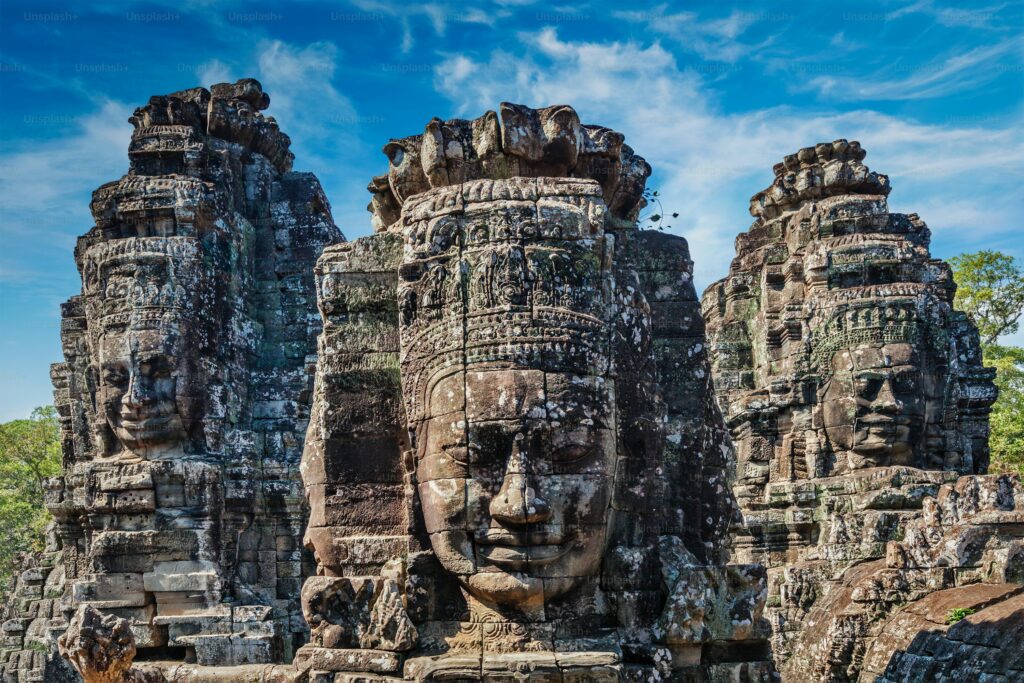
Unraveling the Enigma of Angkor Wat: A Marvel of Megalithic Architecture
Angkor Wat, the largest megalithic religious monument in the world. Nestled in the heart of Cambodia, this sprawling complex is not only a symbol of national pride but also a captivating site that raises questions about ancient architecture and the cultural significance of its megalithic structures. As we delve into the mysteries of Angkor Wat, we discover layers of history, artistry, and spirituality that continue to intrigue archaeologists and visitors alike.
The Magnificent Structure

Angkor Wat was originally built as a Hindu temple dedicated to the god Vishnu. Its grand design features an extensive array of towers, halls, and galleries, all adorned with intricate carvings and sculptures. The centerpiece is a five-towered temple that symbolizes Mount Meru, the center of the universe in Hindu and Buddhist cosmology.
Architectural Wonders

The construction of Angkor Wat reflects a remarkable understanding of geometry and symbolism. The layout is meticulously planned, with a massive moat and intricate pathways guiding visitors through a series of enclosures. The temple is oriented to the west, a rarity in Khmer architecture, suggesting a deeper spiritual significance and perhaps an homage to the concept of death and rebirth.
Carvings and Reliefs

One of the most captivating aspects of Angkor Wat is its detailed bas-reliefs, which cover nearly every surface. These carvings depict scenes from Hindu mythology, historical battles, and everyday life during the Khmer Empire. The most famous is the Churning of the Ocean of Milk, a vibrant illustration of cosmic creation. The artistry not only showcases the skill of ancient artisans but also serves as a window into the beliefs and values of the time.
The Enigmatic Origins
While Angkor Wat’s grandeur is widely recognized, its construction raises several intriguing questions:
1. Technological Marvel
The sheer scale and complexity of Angkor Wat challenge our understanding of ancient engineering. How did the Khmer civilization, lacking modern machinery, transport massive sandstone blocks from a quarry over 50 kilometers away? The precision of the stonework, combined with the elaborate irrigation systems that supported agriculture, suggests a sophisticated level of technology and organization.
2. Cultural Significance
Angkor Wat has transitioned from a Hindu temple to a Buddhist one over the centuries, reflecting the dynamic nature of spiritual practices in the region. This transformation raises questions about the cultural exchanges that occurred within the empire and how these shifts influenced architectural styles and religious beliefs.
3. Mysteries of the Khmer Empire
The decline of the Khmer Empire in the 15th century remains a subject of speculation. What led to the abandonment of Angkor, and how did the once-thriving civilization fade into obscurity? Various theories, ranging from environmental factors to political turmoil, offer insights but no definitive answers.
A Legacy of Inspiration
Today, Angkor Wat serves not only as a historical landmark but also as an inspiration for architects and artists around the world. Its blend of spirituality, artistry, and engineering excellence continues to influence contemporary design and cultural expressions. The site has also become a focal point for discussions about heritage preservation, tourism, and the responsibilities of modern societies to safeguard their history.
Angkor Wat invites us to ponder the achievements of the Khmer Empire while recognizing the complexities and mysteries that still linger.
Visiting Angkor Wat is not merely an exploration of ancient architecture; it is an immersion into a world where mythology, spirituality, and human endeavor intertwine. The ongoing fascination with this architectural marvel encourages us to delve deeper into the narratives of those who built it and the enduring legacy they left behind.
